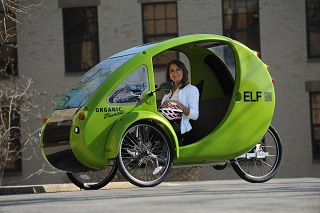News from the UK: More Electric Vehicle Charge Points than Petrol Stations in Five Years

Of course, we need to put this into perspective. For starters, this is not identical to saying that there will be more EVs on the road than ICEs, or that there will be more electrically-driven transportation miles than gasoline-driven miles. In other words, the comparison of charge points to gas stations isn’t really all that informative.
Having said this, it’s clear that the world of transportation is moving towards electric drive, a phenomenon that can only accelerate as costs come down and battery performance goes up.

It is certainly possible that “More Electric Vehicle Charge Points than Petrol Stations in Five Years”, but it might be unwise to take it as a fait accompli. If there are even a modest number of electric cars in five years and most of their owners can recharge them at home, then the prediction would surely be true. However, that would not solve the range problem.
Even with current range limitations, electric cars may make good sense for some people. However, they may remain impractical for a long time in some situations.
Re the coming parity between charging points and petrol stations, this is largely irrelevant as a petrol station will typically re-fuel far more vehicles per hour in busy times than an EV charging station.
I suspect that the range problem will largely disappear in the next 5 to 10 years.
The cost of batteries per kWh stored is dropping fast, and energy density is steadily increasing so that twice the range in the same battery pack size and at lower cost than today’s batteries is looking increasingly possible. What’s more, doubling the battery capacity will not require twice the amount of power electronics. (Power output will not double in your typical family car as it does not need to!).
Lighter materials look likely to also contribute to greater range as in the case of the BMW 3i, which has a range around 30% longer than is might have thanks to extensive use of carbon fiber in the bodywork. The cost of carbon fiber is much lower than it used to be a decade or so back. Still more expensive than steel, but a fraction of the weight so can offset the cost with reduced requirements for motor power, battery capacity, and energy consumption for a given performance.
Whilst a range of 80 to 100 miles is only marginally viable for most people, a range of 150 to 200 miles with the ability to 80% charge in 30 minutes is far more practical (most people other than long haul truckers will not want to drive further than this without stopping for a break whatever they might be driving).
Obviously, it would be nice to have a range of 300 miles, but in practical terms, most people don’t need that!
Absolutely agree with Gary Tulie, it would take time to recharge a vehicle. Not quite practical. May be it makes sense to enable a quick battery change on such stations or focus on alternative green fuel like this one for example: http://www.truck1.eu/_TEN_news_id_419.html
At a rough calculation, you would need around 6 charging points to replace 1 traditional pump because of the difference in charging times. They are however easier to install, and can be fitted within regular car parks wherever there is a 3 phase electricity supply available. (There are very strict safety rules for traditional pumps to help prevent / minimise the impact of fires or spills).